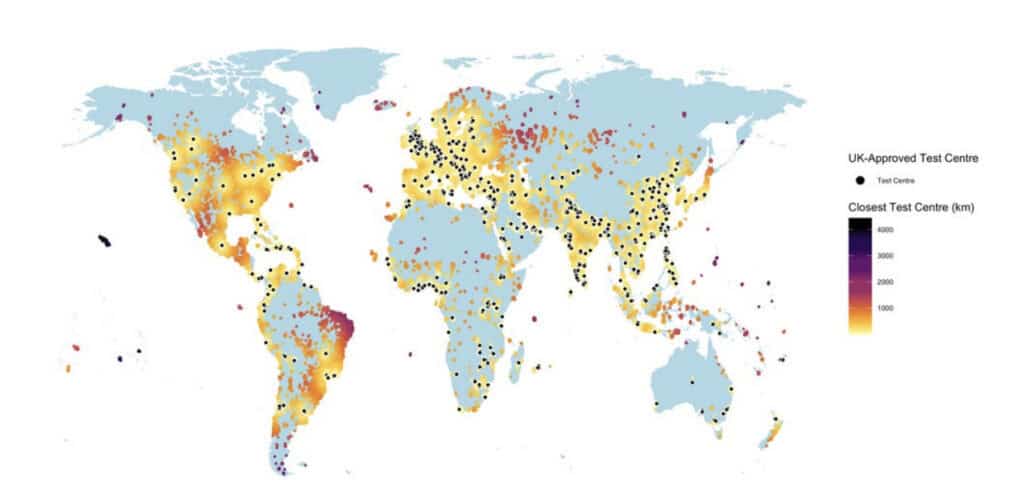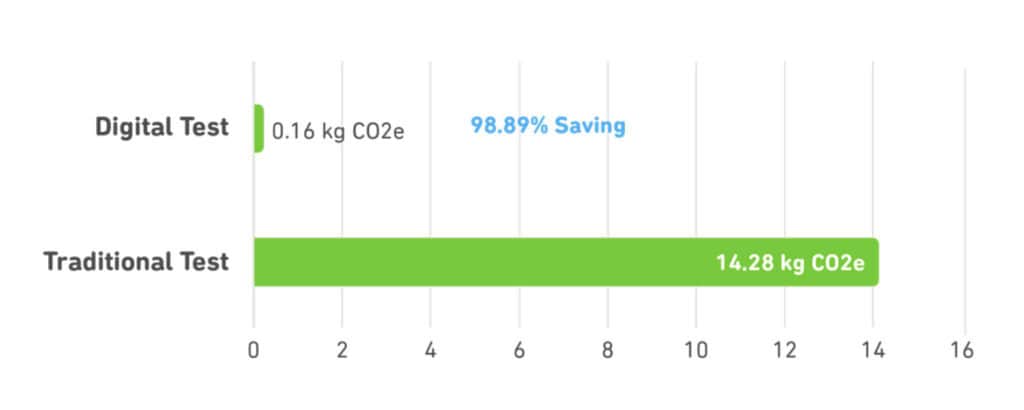- IESG analysis estimates traditional, in-person English tests generate an average of 14.3kg of CO₂e per test
- By contrast, a remote digital test produces just 0.16kg of CO₂e, highlighting a potential 98% reduction in carbon emissions
- On average, prospective students are making 175km round trips for English language testing
The report, created in partnership with Duolingo, focussed on the ‘carbon cost of English proficiency testing’ for students choosing to study in the UK. It found that British universities could cut carbon emissions by 98% by transitioning to digital English language tests for admissions purposes.
The analysis undertaken by IESG found that the total distance travelled by prospective international students to test centres surpassed 51 million kilometres a year, with individual trips averaging 175 kilometres.
Nearly half of the students surveyed in the report travelled over 10 kilometres, while one-in-ten faced journeys exceeding 600 kilometres.
Based on the estimated English language 500,000 tests taken annually by international students for UK university entry, the report estimates that the carbon cost to the UK higher education sector from traditional in-person testing totals approximately 11,173 tonnes of CO₂e emissions.
Avoiding these emissions would be equivalent to taking about 2,000 cars off the road or planting 200,000 trees every year, and could significantly boost the higher education efforts to reach net-zero in the near future.


The analysis focused on both physical and digital test provider carbon contributions, as well as test-taker emissions.
The study revealed that for in-person formats, the largest carbon impacts stemmed from student travel to test centres, while for remote digital tests the principal impact is the power consumption of a student’s computer, rather than the AI or other digital infrastructure emissions.
Duolingo, which commissioned the report, has been working with Amazon web services to measure energy consumption linked to the delivery of the digital Duolingo English Test (DET).
The findings show each UK university or college could reduce the emissions associated with its language testing requirements by up to 98% by offering remote testing options.
For a large teaching university, this shift would represent an annual reduction of up to 272 tonnes of CO₂e – comparable to the annual emissions from 144 passenger cars.


The UK government’s list of secure English language tests currently only recognises in-person tests, taken under secure conditions from approved suppliers.
However, since the global pandemic, physical test centres have been highlighted as potential barriers for students from rural or remote locations, as well as those facing limited mobility, or financial resources – while other resources such as university teaching itself has pivoted to digital delivery where necessary.
Remote testing has the potential to create more accessible and inclusive pathway to UK higher education. However, concerns remain about robust security of tests taken online.
Tamsin Thomas, senior strategic engagement officer for Duolingo, commented on the report, saying: “The analysis in the report shows there was SELT test provision in less than 500 cities in the world, and that over 46,000 test takers were from places that didn’t have any test centres in those countries – so those students would have had to have actually left the country [to take an English test for university admission].
“We then heard that Loughborough University were actually bringing carbon budgeting into their international strategy, and it felt like a really interesting thing for us to look into [as a digital test provider]. This was our starting point, we wanted the sector to better understand what the carbon cost of tests is a [traditional] test setup, versus online.”

